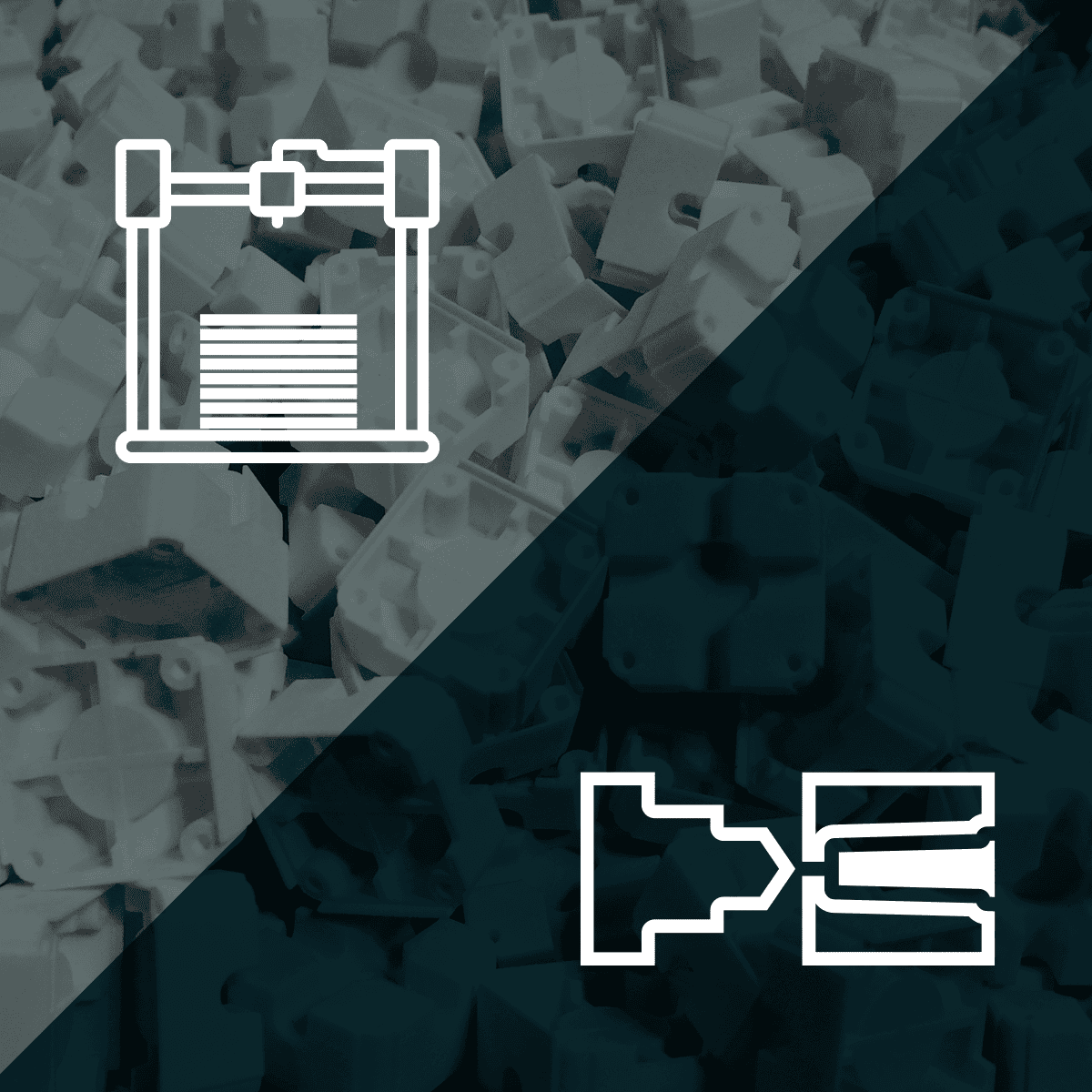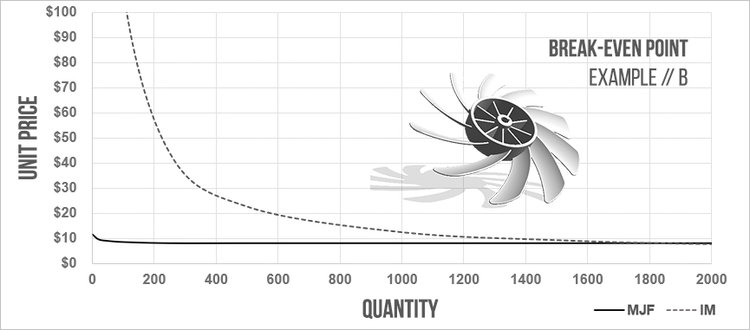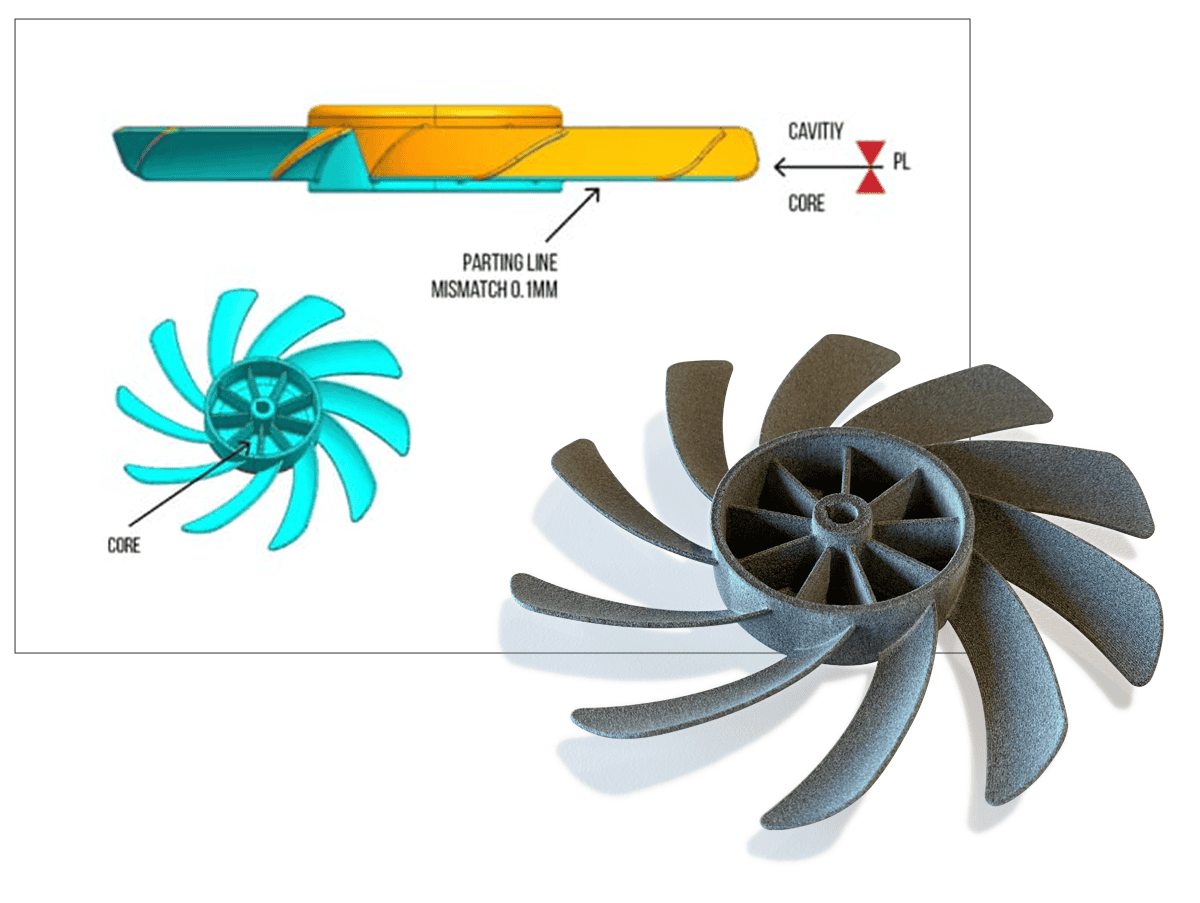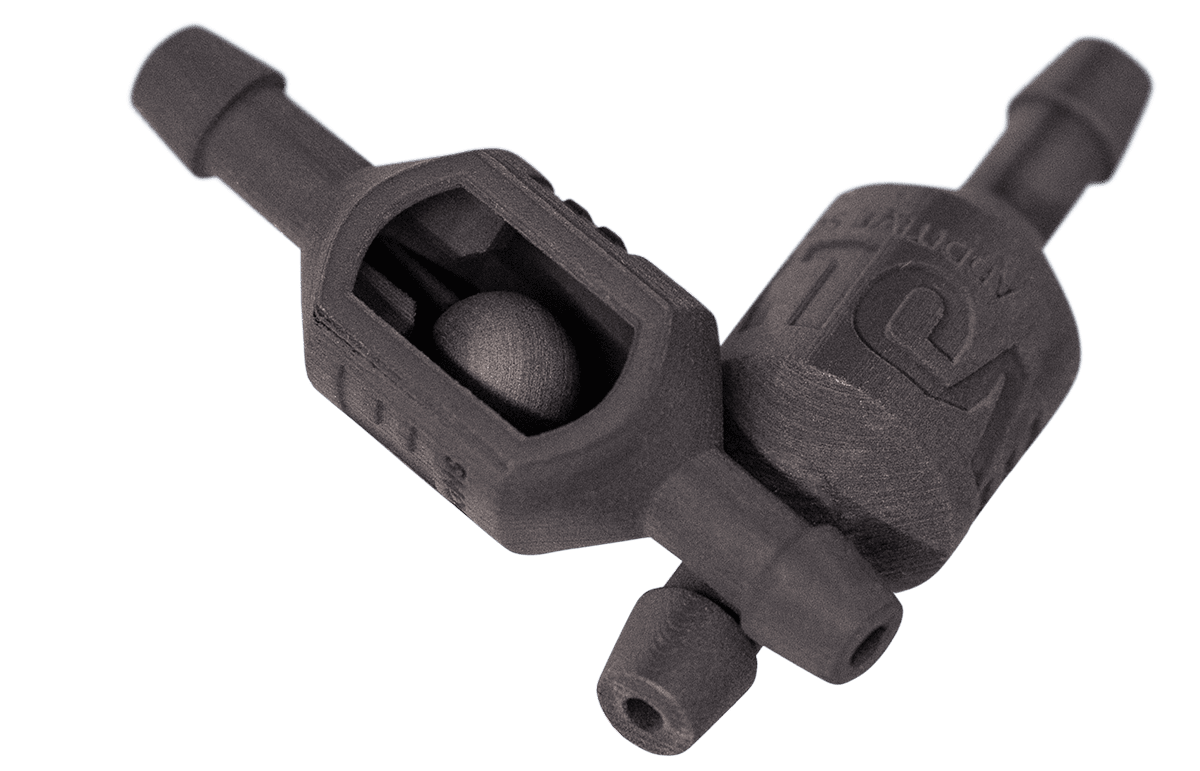Additive vs. Injection Molding
Injection molding and additive manufacturing can meet a variety of needs. Each technology has its strengths and weaknesses. For example, injection molding can be used to produce high-volume runs of complex designs at a low cost per part. Additive manufacturing gives engineers the power to experiment with prototype designs, quickly and affordably. But they can also be used together, helping you refine your part designs and move them to market, fast. Fathom offers decades of experience with both injection molding and additive manufacturing. Our engineers can help you select the process that’s the best fit for your unique needs.
Selecting a Manufacturing Technology
Which technology is the best fit for your part manufacturing needs? That depends upon several factors, including:
- Part size
- Number of parts
- Application requirements
- Finishing needs
Leverage our engineering & manufacturing expertise as we explore these technologies further.

Additive Manufacturing
Advantages
Minimal Setup Time // You can begin printing a part in a matter of minutes. No tooling or setup time is required.
Easy Design Changes // 3D printing is ideal for prototyping because it enables you to create multiple iterations of designs, quickly. If you’re using additive manufacturing to create production parts, you can even make design changes during production.
Intricate Designs // With 3D printing methods, it’s possible to build intricate designs that would be impossible to create using other methods. Examples include parts with conformal cooling channels or hollow interior cavities. Structures like this can’t be built using subtractive methods like CNC machining and are hard to produce using injection molding.
Disadvantages
Part Size Limitations // The maximum size of 3D-printed parts is limited by the size of the build table and the height of the printer used to make them. This size is much smaller than injection mold tools.
Limited Production Runs // Each part may take several hours or up to a day to print. That means the number of parts you can build in a specific amount of time is limited. While multiple smaller parts can be printed in a single build, the process is still much slower than injection molding.
Rough Finish // Because 3D-printed parts are built in layers, their surface isn’t completely smooth, no matter how thin the layers are. Because of this, post-build smoothing (such as vapor smoothing) is usually required to achieve an acceptable finish.
Limited Part Strength // Because 3D-printed parts are built in layers, most of them are not isotropic. They tend to have some weakness in the Z-direction, along the planes where the layers are joined. Also, thick walls in 3D-printed parts are usually replaced with lattice structures to reduce material cost and printing time. While they are robust for most applications, they may not be as strong as injection-molded parts, which utilize solid walls. If part strength is a key design requirement, injection molding may be a better fit.
Injection Molding
Advantages
High-Volume Production // Injection molding enables the production of many parts, quickly. Family molds or multi-cavity molds can make multiple parts in a single shot, increasing the production rate. This makes it possible to produce large numbers of parts from a single tool.
Speed of Production // Once a press is set up and running with your tool and the material of your choice, injection molding can produce parts within seconds, compared to hours for a single 3D-printed part.
No Limits on Part Size // Parts of any size or complexity can be produced using plastic injection molding. Part size is only limited by the size of the tool and the press needed to produce it. However, as press sizes increase beyond a certain point, the cost to run them tends to become exponentially more expensive.
Part Strength // Unlike 3D-printed parts, injection-molded parts are produced using molten plastic resin. There are no layers that can become areas of weakness. Injection-molded parts tend to have a higher tensile strength than 3D-printed parts.
Higher Quality Surface Finish // Injection molding produces parts with a high-quality surface finish that needs little or no post-processing. This helps to speed production compared to 3D-printed parts, which usually need post-processing to give them a smooth finish. Injection tool molds can also be designed to give parts a variety of surface finishes, which are much harder to reproduce on 3D-printed parts.
Disadvantages
Cost & Time Required to Make Tooling // The biggest disadvantage of plastic injection molding is that making steel tooling can take weeks. It also requires a significant up-front cost compared to 3D printing. Because of these factors, injection molding isn’t widely used for prototyping.
Strict Tool & Part Design Rules // Injection mold tools and parts must be designed with great care to ensure affordable tooling and consistent quality parts. For example, consistent wall thicknesses are a must to help ensure uniform filling of the tool cavity and to prevent sink marks. At least one surface of the part needs to be designed with a draft so the part can be released from the tool without scuffing or damage. Parts also must be designed so they can be ejected from the tool. Part designs with overhangs require tools with slide actions. In other words, part of the tool must slide out of the way so the part can be ejected from the tool. This tends to significantly increase the cost of tooling.
Harder to Make Design Changes // Once the steel tooling is made, it becomes very time-consuming and costly to make changes to it. That means part designs need to be finalized before making this investment.
Break-Even Point //
Additive vs. Injection Molding
The breakeven point of 3D printing and injection molding has become much closer, making costs relatively even for comparable production runs. New technologies have helped to close the gap. Some types of additive manufacturing aren’t just used for prototyping but have become a viable alternative for low- to mid-volume production.
The key to performing a break-even analysis is to calculate how much the cost of tooling contributes to the per-part cost. At low part volumes (tens to low thousands), the amortized cost of tooling tends to be prohibitively expensive, often giving additive manufacturing the per-part cost advantage. For longer production runs, the cost of tooling can be spread out over a much larger quantity of parts, giving injection molding a significant advantage.


High-volume parts can benefit from additive manufacturing during the early stages of product development. For example, prototype parts can be quickly produced using 3D printing to validate concepts and test designs for fit, finish and functionality. Designers can also compare multiple designs for a part before committing to expensive tooling.
Three additive technologies are commonly used for prototype production of thermoplastic parts:
If necessary, these technologies can also be used for bridge production. This can be especially valuable if injection mold tooling is delayed or requires time-consuming modifications.
STEP Technology //
A Revolutionary Alternative to Injection Molding
The Selective Thermoplastic Electrophotographic Process (STEP) produces 3D-printed thermoplastic parts at injection molding speed – without expensive and time-consuming tooling.
Because the STEP technology uses powdered versions of popular thermoplastics, it can serve as a single solution for everything from prototype parts and bridge production to full production – enabling you to bring your products to market faster!
It also enables parts to be tightly nested in a single build space, enabling you to produce multiple parts at the same time without compromising print speed. In addition, it offers greater design freedom than injection molding. It can handle sharp corners, thin-to-thick wall transitions and no draft – design features that tend to be problematic for injection-molded parts. In short, STEP technology is a game-changer!

Synergy Between
3D Printing & Injection Molding
These two technologies can be used together to help you achieve your goals – faster. Here’s how:
Step 1 //
Additive Manufacturing
- During the early stages of your part design, 3D printing can be used to quickly print prototypes of it, which you can use to test for form, fit and functionality. This process also enables you to catch part and tool design problems early – before you invest in tooling.
- Because 3D-printed parts can be produced quickly and affordably, you can use rapid prototyping to iterate your part design and reach a final version faster. You can also design several versions of your part and print them at the same time. This enables you to compare physical models of them side-by-side and decide which one you like best.
- Certain additive technologies can be used to make a limited quantity of production-quality parts to meet interim needs. Bridge production can help you solve several common problems, including side-stepping tooling delays, meeting regulatory requirements and conducting market research if you’re unsure of demand for your new product.
Step 2 //
Injection Molding
- Once your part design is finalized, you can have steel tooling made and move your parts into production, confident that they will meet all your requirements.
Our engineers can help you select the process that’s the best fit for your unique needs. Contact us today!
